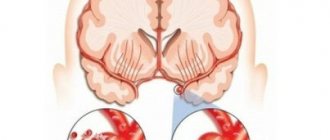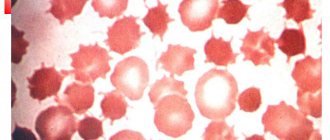Recently, heart diseases have been diagnosed in people quite often. Many of them significantly worsen a person’s physical condition, which negatively affects his ability to work. Considering that a third of the population of our country suffers from one or another pathology of the heart and blood vessels, the question of when one can obtain disabled status, social protection and assistance is quite acute.
Let's figure out which heart diseases cause disability.
What heart diseases cause disability?
Disability can be obtained by a person who has pathologies of the vital systems of the body.
The list of cardiac ailments includes the following heart diseases, in which a person is given disability:
- Heart attack. This pathology leads to a deterioration in the blood supply to almost all tissues and organs, resulting in the development of various functional disorders of the heart muscle and necrosis of its tissues. This disease leads to the physical impossibility of a person to engage in previous work or excludes work altogether. The disease progresses if the patient has a history of IHD (coronary heart disease).
- Hypertension in a severe stage. It is accompanied by a significant increase in pressure in the arteries, which negatively affects the blood supply to the brain and can lead to complete or partial paralysis.
- Severe heart defects and significant disruption of blood supply.
- Diseases of the pulmonary system that are complicated by heart failure.
Reference! Disabled status is also granted to patients who have undergone major heart surgery.
The diagnosis itself may not in all cases become the basis for obtaining the status of a disabled person; in addition to it, the following are taken into account:
- The degree of malfunction in the functioning of the body, caused not only by the pathology itself, but also by its consequences.
- Level of decrease in ability to work and basic self-care. This also includes the ability to move, spatial orientation, learning, etc.
- Social protection measures.
Main symptoms
Symptoms that indicate the severity of the disease may include:
- angina (chest discomfort caused by work or emotions);
- atypical angina, i.e. pain in other places (neck, back, arm);
- shortness of breath on exertion.
If you have been treated, be sure to tell your doctor about any symptoms you experience. Any discomfort and pain should be documented. It's also a good idea to point out that they are interfering with your ability to concentrate or complete your daily tasks.
If there are problems with walking, then this information should also be in the records. Those taking a course of medication are advised to pay attention to how they feel after taking it, as well as any side effects that may occur. These include lethargy, headaches, dizziness, nausea and vomiting, depression, memory loss or blurred vision.
Disability groups
There are 3 groups in total:
- Group 1: The patient constantly needs help from other people,
- Group 2 there is a partial loss of physical abilities; when certain conditions are created, the patient is still able to care for himself,
- Group 3: The patient is able to care for himself without resorting to the help of other people, but work activity is difficult.
Is a person given disability if IHD (coronary heart disease)
Coronary heart disease is a pathological condition characterized by an absolute or relative disruption of the blood supply to the myocardium due to damage to the coronary arteries.
A patient with coronary artery disease cannot perform the following activities:
- combined with heavy physical activity,
- involving contact with precision mechanisms and electromechanical installations,
- associated with a potential threat to the lives of others: drivers, pilots, machinists,
- high-altitude workers and miners undergoing conditions close to extreme conditions.
Read also: Form and sample of a forensic medical examination report
Patients with coronary artery disease whose work type falls under one or more of the above points are recommended to change their type of activity to ensure the safety of the patient and others.
Disability group 3 is given to the patient with a mild heart attack, as well as with angina pectoris FC 2-3.
Group 2 is prescribed after a massive heart attack and with angina pectoris class 4.
Group 1 is reserved for persons who have suffered a complex heart attack and have angina pectoris of FC 4 degree.
Degree of disability due to hypertension
More details: Disability due to hypertension
Hypertension (arterial hypertension) syndrome of increased systolic blood pressure (SBP) ≥ 140 mm Hg. Art. and/or diastolic blood pressure (DBP) ≥ 90 mm Hg.
If we are talking about severe forms of hypertension, as well as complications caused by hypertension, a person also has the right to disability. Stage 3 of the disease, which is characterized by frequently recurring hypertensive crises, significant deterioration of cerebral circulation, damage to other systems and organs, is a direct indication for obtaining disabled status.
Reference! Do they now provide disability for angina pectoris? Yes, but temporarily. For FC 1 for 10 days, for FC 2 for 3 weeks, FC 3 for a month and a half.
Groups for CHF (chronic heart failure)
Chronic heart failure is a disease accompanied by characteristic symptoms (shortness of breath, decreased physical activity, fatigue, swelling, etc.) associated with inadequate perfusion of organs and tissues at rest or during exercise, accompanied by fluid retention in the body.
CHF is divided into functional classes:
- Class 1: There are no restrictions in physical activity, habitual physical activity does not cause severe fatigue, weakness, shortness of breath or palpitations.
- Class 2: moderate limitation of physical activity, no pathological symptoms at rest, habitual physical activity causes weakness, shortness of breath, palpitations, and fatigue.
- Class 3 there is a pronounced limitation of physical activity, the patient feels comfort only at rest, physical activity of less intensity compared to usual exercise is accompanied by weakness, palpitations, and shortness of breath.
- Grade 4 is impossible to perform any physical activity without experiencing discomfort. Symptoms of heart failure occur at rest and worsen with any physical activity.
Disability groups for heart failure are distributed as follows:
- CHF 1st degree FC 1, 2, 3 disability groups are not provided.
- CHF 2 degrees FC 4, as well as CHF 2 degrees FC 1 are assigned group 3.
- CHF 3rd degree FC 2, 3, 4 is assigned to 2nd disability group.
High blood pressure groups
Factors that experts consider when determining the disability group for hypertension:
- the course of the disease and the frequency of rising blood pressure,
- the presence of complications associated with hypertension and severity,
- features of professional activity, which can be changed if necessary.
Read also: Registration of hearing disability: what documents are needed
Group 3 disability is determined upon diagnosis of stage 2 hypertension with asymptomatic tissue damage to target organs. It provides for changes in working conditions.
Group 2 is for persons with 2 and 3 degrees of pathology, in which target organ damage is observed.
1st disability group is issued for:
- progression of the disease and obvious clinical signs,
- serious disturbances in the functioning of internal organs,
- development of severe heart failure,
- loss of self-care ability.
Disability due to ischemic heart disease
Patients with coronary heart disease cannot be involved in certain jobs:
- Work that requires strong physical exertion.
- Activities related to machine tools and other mechanisms.
- Work that may be dangerous for other people if the patient suddenly experiences a morbid crisis and is unable to continue working.
- Extreme work, activity at heights.
- Working with harmful substances that negatively affect human health and can cause a crisis.
Important! If the patient receives a certain group and can continue to work, it is better to change place so as not to endanger health and not aggravate the disease .
When diagnosed with angina pectoris, patients receive temporary disability:
- For the first functional class (FC 1) it is about 8-10 days.
- In case of angina pectoris FC 2, a disability group is issued, more precisely, exemption from work for a period of 14-21 days.
- FC 3 implies release from work for a period of 28 to 35 days.
- If a person suffers a small-focal heart attack, he is released from work for 60-90 days.
- If the infarction is large-focal, but has no complications, release is given for a period of 90-120 days.
- In the case of a transmural infarction with complications, temporary disability is issued for 150-180 days.
For coronary heart disease, disability is assigned in the following cases:
- When a patient is diagnosed with stage 3 hypertension.
- There are lesions of various internal organs with irreversible changes.
This stage is characterized by frequent crises due to circulatory disorders. Disability is also assigned for angina pectoris if the patient has undergone bypass surgery, after which the blood flow and heart muscles are completely restored.
Disability after heart surgery
Heart surgery is a radical method of treatment, which is prescribed if the patient is in critical condition and all possible drug treatment has not led to positive dynamics. In most cases, after cardiac surgery, the patient is assigned to one of the disability groups.
After bypass
Bypass surgery is the creation of an additional path bypassing the affected area of any vessel or pathway of the body using cavity plastic modeling surgery.
To determine the disability group, specialists take into account the following factors:
- response to coronary artery bypass surgery, body reaction,
- For what indications was the operation performed and whether there were other diseases.
If persistent negative changes are identified, disability can be assigned for life, but in most cases it is assigned for a couple of years. Subsequently, the patient undergoes re-examination, which can either change the group or remove it completely.
After valve replacement
Replacing a valve cannot always completely eliminate all heart problems, and the issue of disability is decided in each specific case on an individual basis. The patient undergoes an examination, and in accordance with its results, specialists determine the degree of so-called wear and tear of the heart muscle. If there are signs of CHF, this may be a reason for transferring the patient to easier working conditions or receiving disability.
After ablation
Radiofrequency catheter ablation is a surgical treatment for arrhythmias. This includes a number of methods in which the source of arrhythmia (pathological pathways) is destroyed by heating using electric current.
Not long ago, after ablation, group 2 was prescribed. It was given for a period of 1 year. Nowadays, thanks to modern surgical capabilities, the operation has become significantly simplified, therefore, the recovery period has also become simpler and shorter. The decision to assign a disability group to a patient is made based on the form and degree of disruption of the blood supply to organs.
With NK 1st degree, disability is not provided, with NK 2nd degree, 2nd group is provided, and with NK 3rd degree, 1st disability group.
How to recognize angina pectoris
Symptoms characteristic of angina pectoris allow us to draw attention to the problem. Next, confirmation of the status is required. For this purpose, the following diagnostic measures are used:
- coronary angiography;
- tests for physical activity - bicycle ergometry;
- biochemical blood test and general analysis;
- electrocardiography.
The presence of atherosclerosis is a direct prerequisite for the development of angina, since cholesterol and LDL provoke blockage of blood vessels. A high concentration of troponins indicates damage to myocardial tissue, and therefore the presence of a pre-infarction state.
Using electrocardiography, changes in ST and heart rhythms and the presence of negative T waves are studied. Ultrasound of the heart makes it possible to track the functioning of the organ in dynamics. Coronary angiography is aimed at studying the degree of lumen of the arteries. Bicycle ergometry is used to determine a load that is safe for the heart.
Registration of disability
To register a disability and receive social support for a disabled person, it is necessary to undergo a medical examination. The first step is to visit a cardiologist and submit to him an application about your intention to undergo an examination to obtain disability. After the examination, the doctor records all the data in the patient’s medical record and refers the patient to other specialists. After diagnosis, the patient should have a number of documents in hand.
Read also: Procedure for issuing and paying for a certificate of incapacity for child care
There are 3 levels of the ITU Bureau (medical and social examination):
- The local office is located at the patient's place of residence.
- The main bureau should contact it if you disagree with a decision made at the local bureau.
- The Federal Bureau can be contacted if you disagree with the decision of lower-level organizations, as well as if a complex type of examination is needed (for this, a referral from the local and main bureaus is issued).
Important! If the patient is unable to visit the commission due to poor health, which is confirmed by a certificate from the attending physician, the examination can be carried out at home or in absentia.
Registration of disability in relation to a child has some nuances: parents must contact their local pediatrician at their place of residence, who will give a referral for an examination.
Procedure for conducting the examination
The survey is carried out by specialists who are members of the bureau. In addition, the commission may include representatives of the employment service and other extra-budgetary funds.
The examination includes an examination of the patient’s condition, analysis of the attached documentation, clarification of the patient’s living conditions and other information. The decision is made by the members of the commission during voting. In this case, an ITU act is drawn up.
Survey
As a rule, in case of vascular and heart diseases, disability is given for a period of 12 months. Therefore, patients should undergo regular examination. Sometimes a person may be denied extension of disability. If the patient does not agree with the decision of the commission, he can appeal this decision within 30 days to the ITU bureau. To resolve particularly controversial issues, you can turn to the courts.









